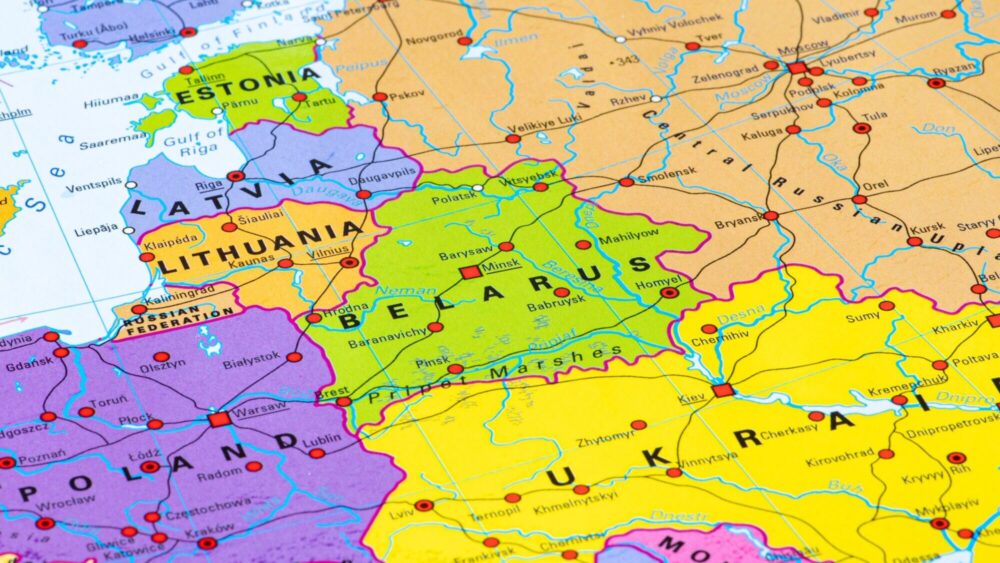
Michele Ursi / Shutterstock.com
Taking the region’s security into their own hands amid heightened tensions with Russia, Latvia, Lithuania, and Estonia have formally agreed to establish a collective “Baltic defense line” set to feature a network of hundreds of bunkers and other defense installations along their eastern borders.
Latvian Defense Minister Andris Sprūds announced plans for the joint defense line at a press conference in Riga following a meeting with his Lithuanian and Estonian counterparts where they inked an agreement to construct a line of “anti-mobility defensive installations” in the years ahead.
Very productive and practical meeting with my Baltic colleagues @a_anusauskas and @HPevkur. The Baltic states will continue to support Ukraine militarily with training, equipment and through our drone, IT and demining coalitions.
— Andris Spruds (@AndrisSpruds) January 19, 2024
We will establish the Baltic Defence Line to… pic.twitter.com/JtBZECHROq
The line will not only strengthen their borders, discouraging illegal migration, but is also designed to deter and safeguard against a potential military attack launched by Moscow, the ministers said. Mines, barbed wire, and dragon’s teeth fortifications are to be stored near the defense line so they can be installed promptly in case conflict breaks out.
As part of the plan to create a mutual defense zone, defense ministers signed a declaration of intent agreement for HIMARS multiple rocket launchers, which seeks to establish a framework for the joint use of weapons systems.
Estonians and Latvia also signed a cooperation agreement to carry out NATO airspace patrols from Latvia’s Lielvarde Air Base while Estonia’s Ämari Air Base is under repairs.
The push to strengthen joint defense stems from NATO’s Madrid Summit in 2023, where Allies were strongly urged to be prepared to defend their territory.
“The Baltic defense zone is a carefully considered and thought-out project, the need of which stems from the security situation. Russia’s war in Ukraine has shown that, in addition to equipment, ammunition, and manpower, we also need physical defense facilities on the border to protect Estonia from the first meter,” Estonian Defense Minister Hanno Pevkur said.
🛡️ The Baltic countries have agreed on the 🇪🇪🇱🇻🇱🇹 #BalticDefenceLine along their eastern border. It's crucial to use time wisely to increase #defence readiness. #NotAnInch pic.twitter.com/PDcSqxtAh7
— MoD Estonia (@MoD_Estonia) January 19, 2024
“We are undertaking this effort so that the people of Estonia can feel safe, but also so if the slightest risk emerges, we are ready for various developments more promptly,” he added.
Lithuanian Defense Minister Arvydas Anušauskas, for his part, stressed the importance of joint action. “In light of Russian aggression in Ukraine, it is essential that cooperation between the three Baltic states becomes the strongest ever in our histories,” he told members of the press.
Estonia plans to allocate €60 million to construct 600 bunkers along its 294-kilometer border with Russia, according to a report from the Estonian news portal Postimees. Each bunker will be 30–35 square meters in size, designed for ten people, and should be able to withstand a direct hit from a 152-millimeter caliber projectile. Construction of the planned bunker network is expected to begin at the beginning of 2025, following negotiations with private landowners.
Colonel Tarmo Kundla, head of the Estonian Defense Forces (EDF) General Staff’s operations department, explained that the defense installations would not only raise the material and human cost of a potential attack but would also act as an early warning system in case an aggressor is making preparations for a westward assault.
“There is no such thing as an impenetrable defense, but the price an adversary has to invest to penetrate that defense is still significantly higher than he would have to pay now. Also, the preparations that he will have to make to break through that line of defense are much more visible to us than what is the case now. Perhaps the opponent’s preparation will also work as a forewarning for us,” Colonel Kundla said.
The announcement comes as German Defense Minister Boris Pistorius warned during an interview with Tagesspiegel published Friday, January 19th, that Russia could attack a NATO member country in the next five to eight years.
Days earlier, during remarks delivered at a meeting of NATO’s Military Committee in Chiefs of Defence, Admiral Rob Bauer, who chairs the committee, called the global situation “the most dangerous world in decades.”
